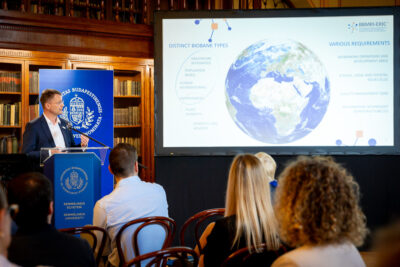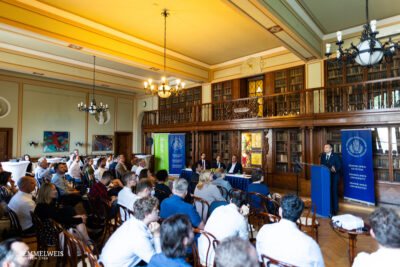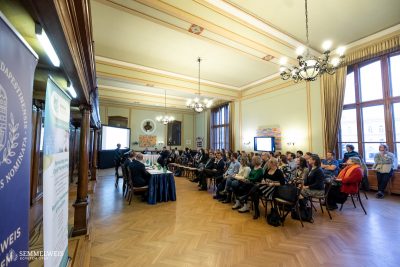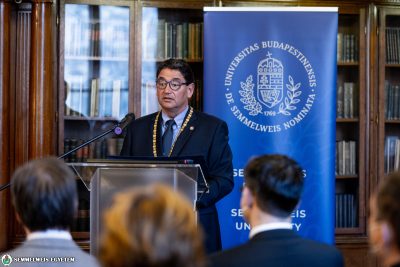 Semmelweis has decades of experience in biobanks, with around 100,000 biological samples currently stored in 25 different facilities. In 2021, the university became part of the largest biobank network and research infrastructure in Europe by joining the Biobanking and Biomolecular Research Infrastructure – European Research Infrastructure Consortium (BBMRI-ERIC). The university is also the leader of the BBMRI National Node and thus the flagship of national efforts in this area, the rector reminded. “One of the conditions for moving forward is a more coherent system, a homogeneous IT infrastructure for data collection. This is the aim of a forthcoming data repository project, which would unify the university’s databases under the thematic excellence program. We are planning a phased expansion of the current infrastructure, with the ongoing Science Park project providing the opportunity for the next step up.” highlighted the rector. “Biobanks are essential for a competitive R&D and innovation ecosystem. We are committed to further expanding the opportunities in this field, to maintaining our leadership, and to increasing the visibility of Semmelweis both domestically and internationally.” Dr. Béla Merkely concluded.
Semmelweis has decades of experience in biobanks, with around 100,000 biological samples currently stored in 25 different facilities. In 2021, the university became part of the largest biobank network and research infrastructure in Europe by joining the Biobanking and Biomolecular Research Infrastructure – European Research Infrastructure Consortium (BBMRI-ERIC). The university is also the leader of the BBMRI National Node and thus the flagship of national efforts in this area, the rector reminded. “One of the conditions for moving forward is a more coherent system, a homogeneous IT infrastructure for data collection. This is the aim of a forthcoming data repository project, which would unify the university’s databases under the thematic excellence program. We are planning a phased expansion of the current infrastructure, with the ongoing Science Park project providing the opportunity for the next step up.” highlighted the rector. “Biobanks are essential for a competitive R&D and innovation ecosystem. We are committed to further expanding the opportunities in this field, to maintaining our leadership, and to increasing the visibility of Semmelweis both domestically and internationally.” Dr. Béla Merkely concluded.
 Dr. Mária Judit Molnár, Director of Semmelweis University’s Institute of Genomic Medicine and Rare Disorders, Head of Semmelweis Biobank Network highlighted that biobanks are collecting not only samples but also different data, so in that regard, they are important data integration centers as well. According to her, the Hungarian National Node consists of the four medical universities, the Central Hospital of Southern Pest, and a pharmaceutical company, Gedeon Richter Plc. At present, they own a total number of 500,000 samples in the field of oncology, rare disorders, cardiology, neurology, psychiatry, nephrology, dermatology, opthalmology and endocrinology. Among their strategic goals, the director highlighted federated data sharing as a central aim. Semmelweis University alone has been granted 2 million EUR to develop its own federated data warehouse, to support the safe sharing of genomic and phenomic data, she noted.
Dr. Mária Judit Molnár, Director of Semmelweis University’s Institute of Genomic Medicine and Rare Disorders, Head of Semmelweis Biobank Network highlighted that biobanks are collecting not only samples but also different data, so in that regard, they are important data integration centers as well. According to her, the Hungarian National Node consists of the four medical universities, the Central Hospital of Southern Pest, and a pharmaceutical company, Gedeon Richter Plc. At present, they own a total number of 500,000 samples in the field of oncology, rare disorders, cardiology, neurology, psychiatry, nephrology, dermatology, opthalmology and endocrinology. Among their strategic goals, the director highlighted federated data sharing as a central aim. Semmelweis University alone has been granted 2 million EUR to develop its own federated data warehouse, to support the safe sharing of genomic and phenomic data, she noted.
Dr. Mária Judit Molnár reminded that Semmelweis Biobank Network has 25 different member clinics and institutions, 12 of which belong to a subnetwork called Oncobank. In total, they have close to 100,000 samples from cardiology, oncology, rare disorders, nephrology, mental disorders and asthma. In March this year, the BBMRI Hungarian National Node website was launched, with a wealth of information about biobanks. Besides BBMRI-ERIC, Semmelweis University is represented in 16 different European Reference Networks as well.
 Dr. Balázs Győrffy, Head of Department of Bioinformatics at Semmelweis introduced the university’s new initiative, Oncobank in detail. Reportedly, the goal is to surpass the results of the Cancer Genome Anatomy Project (TCGA), which has strong numbers in publication and 5500 collaboration partners worldwide, but owns limited follow-up data (up to 2 years) and no treatment data as such. Oncobank aims to collect follow-up, subclinical data for a very long time (up to 10 years) and to look at treatment data directly from medical records. „We plan to use our sample collection to measure different levels of data – namely genomic, transcriptomic, and proteomic data as well, to have truly multiomic information from each patient,” said Balázs Győrffy, adding that the goal in sight is to identify biomarkers for various diagnostic, prognostic and predictive purposes. The initiative already obtained the necessary approvals, set up infrastructure for storage, launched a homepage and integrated the REDCap data capture portal, with sample collection currently ongoing at 4 centres. „For this year, the aim is to collect 800 samples in the field of gynaecology, gastroenterology, dermatology, urology and pediatrics, adding pulmonology and further fields next year. By 2024, we hope to reach full capacity, with samples of over 4000 patients,” he said.
Dr. Balázs Győrffy, Head of Department of Bioinformatics at Semmelweis introduced the university’s new initiative, Oncobank in detail. Reportedly, the goal is to surpass the results of the Cancer Genome Anatomy Project (TCGA), which has strong numbers in publication and 5500 collaboration partners worldwide, but owns limited follow-up data (up to 2 years) and no treatment data as such. Oncobank aims to collect follow-up, subclinical data for a very long time (up to 10 years) and to look at treatment data directly from medical records. „We plan to use our sample collection to measure different levels of data – namely genomic, transcriptomic, and proteomic data as well, to have truly multiomic information from each patient,” said Balázs Győrffy, adding that the goal in sight is to identify biomarkers for various diagnostic, prognostic and predictive purposes. The initiative already obtained the necessary approvals, set up infrastructure for storage, launched a homepage and integrated the REDCap data capture portal, with sample collection currently ongoing at 4 centres. „For this year, the aim is to collect 800 samples in the field of gynaecology, gastroenterology, dermatology, urology and pediatrics, adding pulmonology and further fields next year. By 2024, we hope to reach full capacity, with samples of over 4000 patients,” he said.
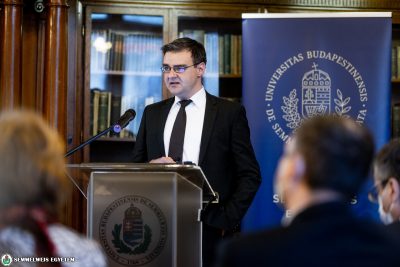 Along with the field of oncology, Semmelweis University’s Heart and Vascular Center in Városmajor is also an active contributor in sample collection. Dr. Tamás Radovits, Associate Professor of the institution in Városmajor reminded that it is the second largest heart transplant center in Europe, with 50-65 cases every year. „We decided to launch a biobank in 2013 to collect biological samples for heart failure research of the future. Our colleagues take and store 122 different samples from each heart,” he said. The biobank provides a substrate for almost all scientific subspecialities of cardiovascular science, including cellular physiology, biochemistry, electrophysiology, histopathology, and molecular biology. Since 2013, samples from 422 hearts have been collected, and even though the pandemic slowered the process, it represents an internationally unique series of human cardiac samples for investigation of heart failure.
Along with the field of oncology, Semmelweis University’s Heart and Vascular Center in Városmajor is also an active contributor in sample collection. Dr. Tamás Radovits, Associate Professor of the institution in Városmajor reminded that it is the second largest heart transplant center in Europe, with 50-65 cases every year. „We decided to launch a biobank in 2013 to collect biological samples for heart failure research of the future. Our colleagues take and store 122 different samples from each heart,” he said. The biobank provides a substrate for almost all scientific subspecialities of cardiovascular science, including cellular physiology, biochemistry, electrophysiology, histopathology, and molecular biology. Since 2013, samples from 422 hearts have been collected, and even though the pandemic slowered the process, it represents an internationally unique series of human cardiac samples for investigation of heart failure.
This collection gives an ultimate edge in the scientific field, creating a real impact on an international level. Intensive scientific cooperation with a number of national and high-profile European and US research institutions has been established, and of course, we are open to further cooperation with academic and industrial partners”
– the associate professor pointed out.
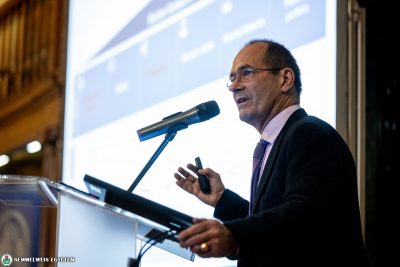 According to Dr. György Németh, Neuropsychiatric Global Portfolio Director at Richter Gedeon Plc., there has been a longtime need for a neuropsychiatric sample collection. That is why Schizobank, a schizophrenia-specific biobank was established in 2008, to explore the molecular basis of this psychiatric disease and to develop biomarkers and new methods to accelerate drug discovery for psychotic diseases. The Schizo-08 consortium includes, among other academic and industrial partners, the Hungarian Clinical Neurogenetics Society and Semmelweis University, and has so far involved around 500 patients and 300 healthy controls in five psychiatric centres. The most important feature of Schizobank is the integration of detailed phenomic and longitudinal data with genomic data,” the director pointed out. The collaboration between Semmelweis and Richter has led to a number of achievements in the field, including the discovery of a new gene, the identification of a new phenotype, and the demonstration of the efficacy of Richter’s psychiatric drug cariprazine in new indications, all of which demonstrate the growing importance of Schizobank in Richter’s drug discovery. “Universities are key players in our R&D ecosystem, and in the future we would like to establish a more direct link between our strategic goals and our collaborative activities with Semmelweis,” concluded Dr. György Németh.
According to Dr. György Németh, Neuropsychiatric Global Portfolio Director at Richter Gedeon Plc., there has been a longtime need for a neuropsychiatric sample collection. That is why Schizobank, a schizophrenia-specific biobank was established in 2008, to explore the molecular basis of this psychiatric disease and to develop biomarkers and new methods to accelerate drug discovery for psychotic diseases. The Schizo-08 consortium includes, among other academic and industrial partners, the Hungarian Clinical Neurogenetics Society and Semmelweis University, and has so far involved around 500 patients and 300 healthy controls in five psychiatric centres. The most important feature of Schizobank is the integration of detailed phenomic and longitudinal data with genomic data,” the director pointed out. The collaboration between Semmelweis and Richter has led to a number of achievements in the field, including the discovery of a new gene, the identification of a new phenotype, and the demonstration of the efficacy of Richter’s psychiatric drug cariprazine in new indications, all of which demonstrate the growing importance of Schizobank in Richter’s drug discovery. “Universities are key players in our R&D ecosystem, and in the future we would like to establish a more direct link between our strategic goals and our collaborative activities with Semmelweis,” concluded Dr. György Németh.
 Dr. Sára Trócsányi, Director of Data Protection and Patient Rights at Semmelweis University, spoke about the legal aspects. According to her, biobanks are databases, and as such, subject to the GDPR which regulates the processing of personal data. One of the reasons for uncertainty around the legal environment is that the Human Genetics Act clearly distinguishes between two cases that in reality often overlap. The law refers to a biobank as a collection of samples containing genetic samples and data for the purpose of human genetic testing or research, but not including biological cell and tissue samples taken for health care or medical research purposes or secondary to an intervention. “Since the law separates this, we have to act accordingly. Clear information must be provided at all times, and whatever is the scientific nature of a given contact, those involved should be aware that the processing of personal data is legitimate all-around,” she stressed. The rights of the data subject – the right to information and the right to self-determination – must be taken very seriously,” continued Dr. Sára Trócsányi. Consent is also required concerning any purpose of sample storage and usage, and everything must be destroyed in case of withdrawal. Data protection authorities may check data processing at any time, which in case of infringement entails fines of up to €20 million instead of the pre-model change fine of €20 million, she warned.
Dr. Sára Trócsányi, Director of Data Protection and Patient Rights at Semmelweis University, spoke about the legal aspects. According to her, biobanks are databases, and as such, subject to the GDPR which regulates the processing of personal data. One of the reasons for uncertainty around the legal environment is that the Human Genetics Act clearly distinguishes between two cases that in reality often overlap. The law refers to a biobank as a collection of samples containing genetic samples and data for the purpose of human genetic testing or research, but not including biological cell and tissue samples taken for health care or medical research purposes or secondary to an intervention. “Since the law separates this, we have to act accordingly. Clear information must be provided at all times, and whatever is the scientific nature of a given contact, those involved should be aware that the processing of personal data is legitimate all-around,” she stressed. The rights of the data subject – the right to information and the right to self-determination – must be taken very seriously,” continued Dr. Sára Trócsányi. Consent is also required concerning any purpose of sample storage and usage, and everything must be destroyed in case of withdrawal. Data protection authorities may check data processing at any time, which in case of infringement entails fines of up to €20 million instead of the pre-model change fine of €20 million, she warned.
The event was organised by the KFI Business Development Centre and hosted by Dr. István Szabó, director of the centre.
Viktória Kiss
Photo: Zoltán Tuba
